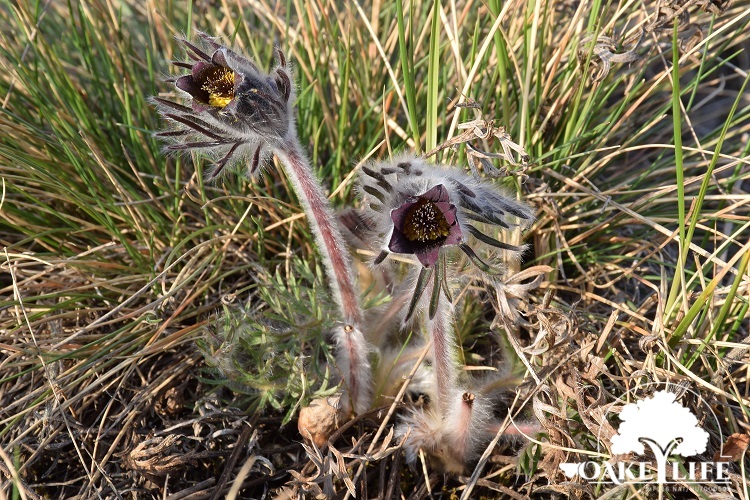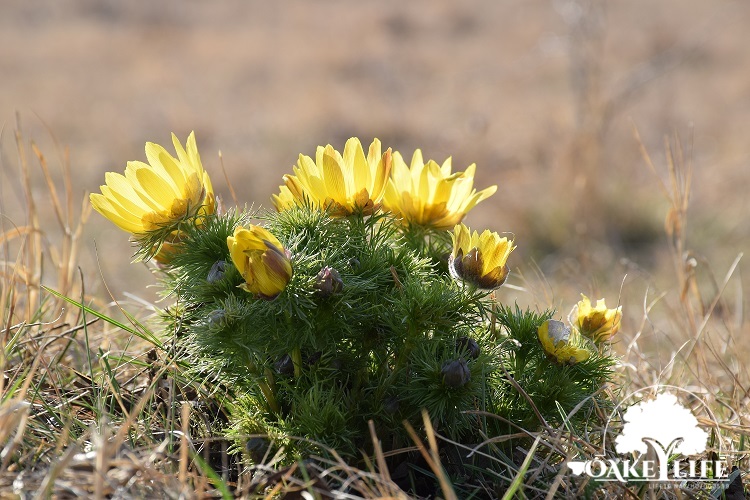Active habitat restoration activities are taking place within the framework of the OAKEYLIFE project. In our article we write about plant species living in the Peszér-forest and its immediate surroundings, which are only present in one or two smaller production areas, and which we have set as our goal to protect.
There are usually well-identifiable causes of sporadic spread. Through the example of two early spring flowers, we would like to show what can lead to the decline of a plant species and what can be done to preserve them and restore their stocks.
The black pasqueflower occurs in the closing sand steppe meadows in the Upper Kiskunság. These production sites have generally been broken up over the past two centuries during sand afforestation and to increase the extent of arable land.
Despite its bunch of seeds is transported by the wind, the black pasqueflower is a poorly propagated species that, to our current knowledge, occurs exclusively in grasslands that have never broken up or have been undisturbed for a very long time. This is presumably due to the fact that the crop is unable to pass from the remaining suitable sites to other sites that have been previously broken but have since been restored.

Pheasant’s eye occurs in only 5 places in the Upper Kiskunság (2 of which are presumably planted). In our region, pheasant’s eye is found on finer-grained, humus-rich sandy soils. These production sites – as the best locally, although still with significantly lower fertility than the domestic average – have been almost completely broken up in the past.
The Upper Kiskunság pheasant’s eye population, which numbered a few hundred stems, remained only above the ancient borderlands and ramparts. This may also have been due to the fact that there was a great demand from the horse-keeping peoples towards the pheasant’s eye. In its popular name, “abscess root” was widely used to cure certain equine diseases. However, the root could only be obtained by digging up the plant and destroying it accordingly.
Pheasant’s eye also has a particularly poor propagation capacity: according to our observations, the vast majority of rather large seeds fall in the immediate vicinity of the mother plant, so on an annual average this allows only a few centimeters of spreading.

For both plant species presented, it is true that there are currently a number of sites (partly in previously restored areas and partly in habitat reconstructions under the OAKEYLIFE project) that would be suitable for settlement under site conditions but for their spontaneous appearance due to their limited capacity there is no realistic chance. These production sites were identified during the soil mapping carried out under the project.
In our project, we establish new stands in the form of in situ sowing and planting seedlings collected from wild and in situ, thus contributing to the preservation of the Upper Kiskunság stands of these plant species, the restoration of the favorable nature conservation status of the Pannonian sand grasslands and the conservation of biodiversity.
Text: Phd Csaba Vadász
Photos: Vadász-Besnyői Vera
